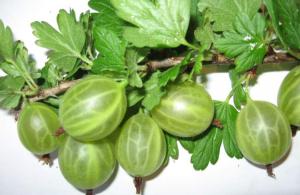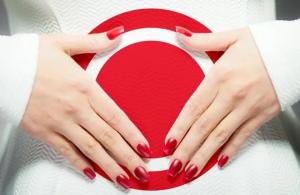Nowadays, stained glass is painting on glass with stained glass paints. In this article we will give a master class in glass painting at home.
In earlier times, craftsmen who decorated buildings, houses, churches and other structures created stained glass windows using pieces of colored glass. The light in temples passing through such a window created an atmosphere of mystery and reverence.
Today we can create stained glass ourselves using special paints.

With the help of stained glass paints we can paint glass jars used for spices or cereals, painted glass bottles will add personality to the interior, a painted glass decanter for water or juice will delight you with its colorfulness, painted flowers or butterflies on an interior door, window or mirror will give you a good mood.
Painting on glass with stained glass paints can help when choosing a gift for family and friends. For example, by painting a set of glasses, you will save on an exclusive gift. You won’t find such a gift in stores; it is made with your own hands and is individual.
Classification of stained glass paints

Stained glass paints are divided into two main groups:
- Water based paints– acrylic, washes off well with water and most often requires firing to fix. After such manipulations, the painted product can be easily washed, even with cleaning agents; this will not harm the paint.
Such paints are environmentally friendly and practically odorless; for these qualities, they are also well suited for children's creativity. They are more liquid and transparent, transmitting light well.
- Organic solvent based paints– alkyd, can be either alcohol-based or varnish-based. Such paints for painting do not require firing; they are thicker and more matte. They hold up well and can be wiped with a damp cloth or rinsed.
But such paints are not suitable for everyone - they have a strong pungent odor, so children and people with allergies should not work with them. In a well-ventilated area, working with such paints will not cause harm.
Everyone chooses for himself which colors he will use for stained glass painting.
Acrylic – do not smell, are brighter, do not require special cleaners. But when applied, the paint may lie unevenly or require several strokes.
Alkyds have a strong smell, are thick and matte. But when applied, they spread evenly over the surface and can even hide unevenness and roughness of the surface of the product.
Types of stained glass paints for decoration

Stained glass paints can not only be used to paint glass surfaces; they can also be used to create paintings and other works of art. For sophisticated craftsmen, there is a choice of stained glass paint textures not only based on their base.
Drawings for painting on glass with stained glass paints can be made using the following materials:
- Silicate- the most common, they are made by melting dye and flux, which produces transparent or matte paints.
- Chandelier– due to the presence of metal oxides in the paint, this paint has metallic or pearlescent colors. It is quite liquid, so it is used after applying a contour first, so that when painting the liquid does not spread and does not mix with other colors.
- Foaming– when fired, such paint swells and peels off a little, resulting in a three-dimensional relief pattern of the stained glass window.
- Icy– or granular; when fired, the granules spread and the pattern appears in the form of pimples. Before applying them, drying oil or special glue is applied to the surface to be painted for better adhesion of the paint to the glass.
- Matting– used to give glass a matte finish, usually used for large surfaces where paints are mixed with each other or for painting according to a pattern. A day after painting, the product is fired to fix the paint.
- Marbled– usually with this type of painting two colors are used, the second one is applied before the first one has dried. Then, using a brush or sponge, they are mixed, depending on what we want to see in the end. Plain marble can be obtained by dropping a little water on the surface, adding transparent paint to the water and then adding the desired color on top.
- Craquelure– used to create antique stained glass; this paint together with acrylic varnish gives a cracking effect.
- Pearl- paint that creates pearls. The pearl is squeezed onto the surface to the required size, then rounded. After a day it dries completely.
- Patterned– it is liquid, based on water and alkyd resins. When using it, before painting a stained glass window, a drop of water is first applied to the required surface. Then paint one or two colors onto the water, then stir with a brush or stick. You can use a cocktail straw to blow out your own design.
Advice! If you are creating a stained glass window for the first time, you should start with ordinary stained glass paints, without any effects and without firing.
Tools and tools

In order for the work not to be interrupted and the mood not to deteriorate, we will prepare in advance everything that we will need in the process of painting stained glass windows:
- Of course, stained glass paints. For the first time, it is worth taking paints that are not suitable for firing. For better fixation, you can use varnish.
- Acrylic lacquer. It will make our painting on stained glass not only glossy and shiny, but also more wear-resistant. In addition, the product can be easily washed with water.
- A contour for drawing with stained glass paints, usually sold together with paints, or in the same department.
- Tapered brushes. This is if the paint is in jars and without attachments, or if it needs to be corrected somewhere.
- A palette if you plan to mix several colors. But for the first time, you should choose a simpler drawing.
- A stencil with a design or pattern. Stencils for painting with stained glass paints on glass are sold in the same place where the paint is sold.
- A marker to transfer the stencil design onto the glass.
- Glass or glass product. Glass for painting with stained glass paints is sold in stores where the paint is available, in different shapes and sizes.
- Alcohol or acetone, whatever you have on hand, for wiping off excess paint and correcting uneven spots.
- Cotton swabs and toothpicks or a needle. They are convenient for removing excess paint and correcting the outline.
- A rag to wipe off your brushes before dipping them back into the paint.
- Solvent for paints. It is mandatory only for these paints; a solvent from another company or for other paints can ruin our paints.
When all the tools and materials are ready, we need to cover the surface on which we are going to do stained glass painting and get to work.
Glass painting technique

Below are step-by-step instructions on how to paint a glass surface with stained glass paints using irises as an example:

- We degrease the glass using any detergent, alcohol or acetone, so that the paint adheres better to the surface.
Advice! It is best to place white paper or whatman paper under the glass, this will make it easier to draw and you will see what shades of paint are needed.
- Place the stencil on the glass and trace the design with a marker. We won't need the stencil anymore.
- We draw an outline. It is better to move from the center to the edges, without rushing. We try to squeeze out the contour evenly and not leave gaps.
- The contour must dry thoroughly; its drying time is usually indicated on the tube. The main thing is not to rush, you can start coloring the next day.
- The most interesting thing is the filling of stained glass fragments. We also do this in stages, moving from the core of the picture.
- We choose a paint color and paint all the fragments of this color. For light shades, mix paints on the palette to the desired color.
- When the flowers are ready, we proceed to the background between them. As planned, it is matte-transparent, for this it is better to use varnish. It dries quite quickly.
- Let's move on to the frame - the pebbles. We paint smaller stones with a smaller brush, larger ones with a larger brush.
Now all you have to do is wait for the stained glass to dry, it depends on the paint, the drying time is indicated on the packaging.
Our stained glass picture is ready, all that remains is to place it in a frame and find its rightful place.
Conclusion

Now we know how to do stained glass painting, and we can create our own stained glass masterpieces, feeling like real artists. You can use your stained glass paintings not only on plain glass, but also on dishes, windows and mirrors.
By decorating a glass cup with an individual pattern, you can give it to family or friends. They will not only like its decorative appearance, but will also be flattered by the attention and care paid to it. Moreover, such a gift will cost much less than a purchased exclusive, since the price of paints is affordable to anyone.
In the video in this article we can watch a master class on painting glass with stained glass paints.
Stained glass is a special type of monumental and decorative art. Interesting in itself, it acquires great expressiveness in combination with other types of fine arts, especially architecture. His past is rich, his prospects are limitless, his creative possibilities are inexhaustible.
Stained glass windows in the form of ornamental compositions, patterns or paintings are made of clear or colored glass, with painting of individual parts or the entire plane of the glass with ceramic paints or without painting. Stained glass windows made from individual glass parts are reinforced with lead tape; monolithic glass does not require reinforcement.
Purpose of stained glass diverse: they are a rich decorative decoration of buildings and individual rooms, replace window glass and door panels, transmit light and make it possible to isolate the premises of the first floors from prying eyes.
Reflecting in their images the nature and purpose of the structure and complementing its artistic image, stained glass windows play a significant role in interior design.
Stained glass art has its origins in the distant past. Stained glass windows, which previously represented a set of colored glass, often served as a random decoration of the room; Over time, their composition, drawing, artistic glass processing and execution technique were improved. Stained glass windows became genuine works of art, an integral part of the strictly thought-out monumental and decorative decoration of buildings.
Stained glass, which was used mainly in the decoration of churches and monasteries, is gradually penetrating residential and public buildings. The religious theme of stained glass windows is being replaced by a secular one, reflecting the modern trend in art, following the aesthetic requirements and spirit of the era.
There are many stained glass windows created in the world by outstanding painters and skilled craftsmen. The name of the author or master often tells us the artistic value of a particular work of art. However, many wonderful stained glass windows were created by the hands of masters whose names remained unknown to us. An artist belongs to his era, but works of art often outgrow their era and become eternal. Similar stained glass masterpieces have been preserved in France, Germany, Italy, Switzerland, England, the Netherlands, Czechoslovakia and other countries. The stained glass windows stored in the State Hermitage in St. Petersburg are worthy of attention.
Stained glass windows benefit not only from bright sunlight, but alsosoft sunset tones and sparkling evening lights. As for the artificial lighting of stained glass windows, even with fluorescent lamps, it has been established that such lighting gives the stained glass windows a frozen expression, it cannot cause that play of light and shadows, those light and color effects that are created by natural lighting, endlessly changing to throughout the day and throughout the year. It is, of course, possible in some cases to use special installations with synchronously changing artificial lighting, but this already falls into the realm of expensive equipment and hardly justifiable effects.
Stained glass - glass painting, mosaic or carpet, whose colors never fade or fade.
It is difficult to say when the first stained glass windows were created. In any case, there is no reason to claim that they appeared soon after the invention of glass. It is only known that mosaics made of small plates of colored glass were discovered in ancient Rome during the empire (first century BC - beginning of AD) and in the temples of the first Christians. Windows of the St. Sophia Cathedral in Constantinople, which became the capital of Byzantium in 330 AD. e., were glazed with colored glass, apparently soon after the construction of the cathedral.
According to some literary sources, it is known that during excavations of the cities of ancient Italy Pompeii and Herculaneum, which died in 79 AD. e. During the eruption of Vesuvius, colored glass mosaic floors, wall paintings and fragments of stained glass were discovered. According to other sources, only glass mosaics of floors and walls were discovered in Pompeii, since the houses had few windows and mostly without glass. But the use of window glass is confirmed by pieces of frosted or, perhaps, opaque glass found during excavations.
Colored window glazing was originally a glass mosaic inserted into the stone and wooden openings of the window tracery. Then a mosaic of colored glass appeared, cut and assembled in a lead frame in the form of a pattern, geometric or floral design. Such mosaics were assembled in a metal frame and installed in window openings. It is very likely that the colors used in large windows were intense and bright, while in small windows they were used pale and calm.
Colored glazing gradually formed a special branch of decorative art and became equal among other branches and types of art.
Over time, the requirements for glass mosaic designs have increased. We tried to shade colored glass by applying darker colors. The results were positive. The technique of coloring glass by firing was discovered in the 9th century. This new technique has found widespread use. Thus, glass painting arose and developed at the end of the 10th century. With the development of glass painting, glass mosaic began to fade into the background, but it was not completely supplanted, but continued to exist in combination with glass painting.
Lead and black paint were used to make stained glass with human figures.
Acrylic paints are easy to use and allow even novice needlewomen to paint decorative plates, glasses or any other glass elements that ordinary paint would not stick to. A rich selection of color palettes and the convenience of tubes make this type of creativity truly enjoyable and comfortable and allow you to create real paintings. So let's learn the basics of painting using acrylic paints on prepared glass. A master class that is suitable even for beginners will help you learn the technique.
Painting with acrylic paints on glass: master class for beginners
When choosing acrylic paints, you should pay attention that they differ in stained glass and coating.
Topcoat paints are similar to ordinary gouache; they are dense and opaque. To draw with them, the most minimal skills are required; they “forgive” the inept strokes of beginners. Most often, such paints are water-based, so they easily chip or even wash off from the finished product. To prevent this from happening, after painting the craft must be coated with a special varnish (usually water-based acrylic), securing the design.
Stained glass paints.Stained glass paints provide a transparent finish and look very beautiful on large images. To work with them, it is better to already have experience in the technique of carefully painting contours. You can find several types of stained glass paints in stores:
- ordinary - you need to wait about a day for them to dry.
- baked - to fix the image, you need to heat it in the oven according to the instructions
- "sticky" paints. This is more of a children's option, but it is very fun to use. To obtain an image, you need to apply it to a smooth surface, wait until it dries and then peel it off like a film. Then, using this film, you can stick it like a sticker on any surface.
- acrylic paints. A set of topcoat paints of six colors will cost only 150-170 rubles, while stained glass paints are much more expensive - one jar costs about 250 rubles.
- special acrylic varnish for fixing finished images. It can be of several types: for application with a brush or for spraying from a can. The latter is more convenient, but more expensive than the first option. An ordinary 50 ml jar of liquid varnish can be bought for 160-180 rubles.
- several good brushes of different thicknesses (from No. 1 for drawing thin patterns to No. 18 for applying varnish) and shapes (round and flat). The cost of one brush is 20-35 rubles.
- palette knife - a special metal spatula for mixing paints. At the initial stage, you can do without it.
- artistic outlines, especially if you plan to work with stained glass paints.
- toothpicks and cotton swabs to correct the image in case of errors.
- palette (for starters, you can replace it with a regular disposable white plate)
- paper and pencil. They will be useful for preparing sketches of the future drawing, and it is also better to practice the first strokes on a sheet of paper before applying them to the glass.
Let's look at the basic techniques for high-quality glass painting
There are several basic glass painting techniques using acrylic paints: dot painting, stencil painting and hand painting with brushes. Dotted application of paints will allow you to create very fashionable images in an ethno-style.

Stencil painting is one of the simplest techniques. The greatest care is required when cutting out the template itself, especially if it contains small parts.
Finally, hand painting is an option for advanced artists. Using this technique, you can create real paintings on dishes. The photo below shows several examples.
Learn a simple DIY bottle decoration tutorial
You will need:
- acrylic paints
- contour on glass and ceramics
- brushes
- nail polish remover with cotton pads
- toothpicks
- cotton buds
- palette
- glitter
- water based acrylic varnish
- sandpaper (needed if the label is hard to come off of the bottle)
1) Soak the bottle in hot water with added detergent.
2) Remove all labels from the bottle (if they don’t come off easily, use sandpaper). Degrease the glass using nail polish.
3) In this example, there is already an image of flowers on the bottle, so you don’t have to draw them yourself using templates. We outline the flowers.

4) If necessary, correct the jumping using a cotton swab and toothpick.
5) Mix paints on the palette and paint the flowers.
6) After a few hours, the image can be varnished and, if desired, glitter can be added to the drawings.
Video on the topic of the article
For greater clarity, we suggest watching the following videos, which demonstrate step-by-step painting of glass objects with acrylic paints.
Stained glass painting today is called painting on a glass surface with special paints. Previously, stained glass windows were created by craftsmen from pieces of colored glass arranged in a pattern like a mosaic. Such stained glass windows can still be found today: in churches, museums and ancient buildings. The light penetrating through such a painting created an atmosphere of awe and mystery.
Stained glass painting helps to create exclusive decorative items - you can decorate mirrors with it, paint a stained-glass window on a window or an interior door. There is a place for it on a plate; it would be appropriate to decorate mugs or watches with it. It, like painting, helps to depict anything - outlandish flowers, bright butterflies and an entire city can become a magnificent drawing using this technique.
Technologies have stepped forward, and today stained glass windows no longer need to be painstakingly assembled bit by bit. Anyone can create an extraordinary design on glass using stained glass paints. You can decorate anything: a glass display case, a window, a door, and even dishes. For example, a cup painted with your own hands will be an excellent and unusual gift for a loved one. So, how is stained glass painting done? For tips and master classes, see our article.
 Stained glass paints can be divided into several types. For example, they are divided into:
Stained glass paints can be divided into several types. For example, they are divided into:
- Requiring firing.
- Does not require firing.
When painting stained glass with the first type, after drying it needs to be fired in a kiln or oven. Otherwise, the applied pattern will be unstable and will be easily washed off. Typically require water-based paint to be fired. It is better to paint small items with such paints. Firing rules:
- The stained glass must be thoroughly dry before firing. Leave it on for at least a day.
- Harmful to stained glass paints sudden temperature change. Otherwise they may crack. Place the product in a cold oven, and only then turn on the heat. Accordingly, before removing the stained glass from the oven, allow it to cool.
- Strictly follow the firing time and temperature indicated on the packaging by the manufacturer. Insufficient firing will cause the painting to become unstable. And if you burn it too hard, the design on the glass may turn brown.
Paints also differ in the type of solvent:
- Water based paints.
- Alcohol based paints.
- Synthetic solvent based paints.
Water-based paints are most often acrylic. They have a number of advantages:
- Non-toxic and have no unpleasant odor. Absolutely safe, they can be used even for children's creativity.
- They mix well with each other. Therefore, with their help you can get almost any shade.
- Water-based paints are easily washed off with plain water. Therefore, it’s not scary to make a mistake while painting; unsuccessful strokes can be easily removed with a damp cloth.
The third point of advantage easily turns into a disadvantage: when drying, acrylic paints are also unstable. Therefore, when painting products that will subsequently come into contact with water, they will have to be additionally fixed: fired or varnished.
Solvent-based paints are more durable, but for correcting inaccuracies, cleaning hands and tools after work you will need a solvent. In addition, due to the unpleasant odor, it is not recommended to give them to children and to work with them in closed, poorly ventilated areas. But synthetic paints are thicker, spread better over the surface, level themselves and hide minor irregularities.
In addition, the colors are separated on basic colors and contours. Contours will be needed to separate different colors from each other. This way the colors will not spread, and the drawing will be clearer.
When choosing paint, read the instructions carefully. It should indicate that it is suitable for painting glass and ceramics. There you will also find information on what solvent it is made from, whether it requires firing or special application conditions.
Gallery: stained glass painting (25 photos)























Preparing for work
 Before you start painting, prepare everything you need:
Before you start painting, prepare everything you need:
- Special glass for painting (sold in art departments), any glass product or surface.
- Paints. If this is your first experience painting glass surfaces, take paints that do not require firing. For greater durability, you can seal the result with a clear varnish.
- Contour paints. Usually sold together with regular ones or in the same department. It is better to choose contours from the same company as the paints.
- Brushes. To work, you will need several brushes of different thicknesses. The thinnest one draws contours and small details, and the thickest one fills large areas. It is better to take brushes made of artificial bristles. Some paints are available with special attachments. You can paint with them without using a brush. But it’s better to prepare at least one thin one anyway: in case you need to correct the drawing or draw an interpretive line.
- Acrylic clear varnish. It allows you to fix the design and achieve durability even without firing.
- Palette for mixing colors.
- Stencil for transferring a pattern onto glass. You can make it yourself, or you can buy it ready-made in any art department.
- Marker for transferring a design onto a glass surface.
- Water, alcohol or synthetic solvent, depending on the paint base.
- Napkins, cotton swabs and toothpicks to correct the pattern.
- A cloth to wipe the brush while working.
Now prepare your work area. It must be with good lighting. Cover the surface with unnecessary rags or paper. If you are going to use organic solvent-based stained glass paints, the work area must be well ventilated.
Painting with stained glass paints: master class
 After you have prepared all the tools, you can start painting.
After you have prepared all the tools, you can start painting.
- First, degrease your work surface. To do this, wash it with any detergent, wipe with alcohol, acetone or nail polish remover. So, the paint is easier to apply and lasts longer.
- Place the stencil on the glass and trace the outlines with a marker. Experienced needlewomen use contour paints instead of markers. For beginners, it’s better not to rush, otherwise you can ruin the products.
- Apply according to the results line contour paint. Try to move from the center to the edges. The line must be continuous and of the same thickness. Try to avoid tears and thickening, unless this is intended according to the sketch. If you are using a contour that needs to be squeezed out of a tube, experiment with the pressure beforehand.
- Let the outline dry. The packaging usually indicates the time required for drying. You should not rush and continue working with the undried drawing. Blurred contours will look unsightly and ruin the entire appearance.
- When the outline is dry, begin filling in the stained glass elements. This should also be done in the direction from the middle to the edges. If you need to mix several colors, use a palette.
- After all the elements of the picture have been painted over, you can paint over the background. It can be made with paint or varnish.
- Wait for the drawing to dry. If necessary, burn the design in the oven or kiln, and also coat the top with colorless varnish.
The turn is ready. If you used a small glass for painting, place it in a frame and hang it on the wall. A dish or vase decorated in this way can be given as a gift to relatives or friends. Such a unique handmade gift will delight anyone.
Sketch for stained glass painting
 for stained glass painting is a black and white drawing in which all contours are clearly visible. Pictures can be on any topic. They depict flowers, animals and birds, national and ethnic motifs, portraits, landscapes and still lifes, subject paintings and much more.
for stained glass painting is a black and white drawing in which all contours are clearly visible. Pictures can be on any topic. They depict flowers, animals and birds, national and ethnic motifs, portraits, landscapes and still lifes, subject paintings and much more.
The simplest sketches are made in the form of stencils. To do this, slits are made on a piece of cardboard or plastic. They correspond to those parts of the drawing that should be painted over later. The stencil is placed on top onto the glass surface and trace it with a marker or outline. You can buy such a blank at an art store, or you can make it yourself using a piece of cardboard and a sharp knife.
More complex designs can hardly be represented in the form of a stencil. Therefore, such sketches are transferred to glass, attaching the blank to the back side. You can buy a ready-made diagram in a store or make it yourself by printing the picture you like on a printer.
DIY stained glass paints
It is not necessary to buy stained glass paints. They are easy to make with your own hands. To do this, take a jar of PVA glue and food coloring. To prepare one color, two tablespoons will be enough. Mix glue and dye in a small scrap container. Now you can use it. This stained glass window takes about a day to dry.
Safety precautions
To ensure that your new hobby does not harm your health, follow some rules:
- Stained glass painting with dyes based on synthetic solvent Only carry out in a well-ventilated area.
- Keep all art supplies out of the reach of small children.
- Stained glass should not come into contact with food. Therefore, the dishes on which stained glass painting is made lose their functionality and become exclusively an interior item. As a last resort, it is allowed to paint the bottom of a wine glass, glass or cup. The top edge should be no less than one and a half centimeters free from the pattern.
By following these simple rules, you can avoid unpleasant situations, and your new hobby will only bring pleasure.
(No ratings yet)








